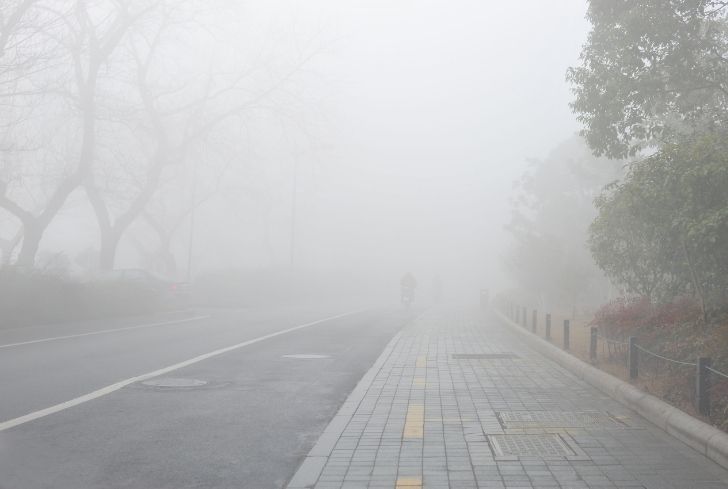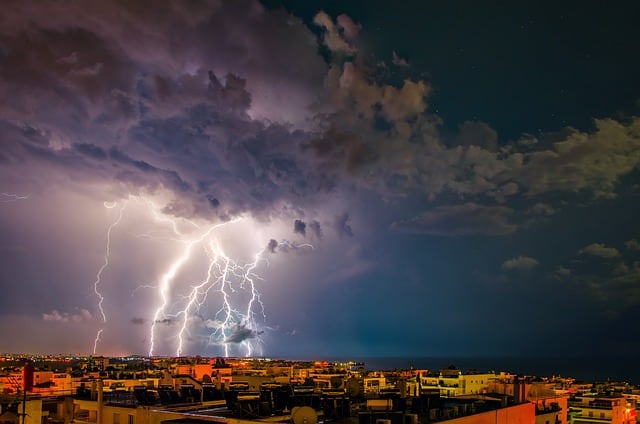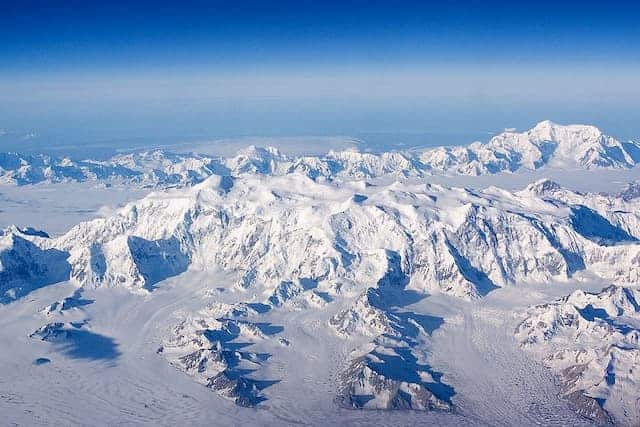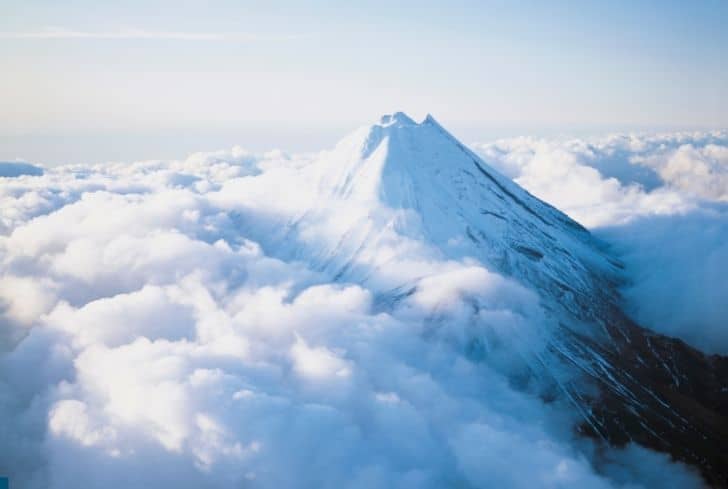Difference Between Fog And Clouds

Nature has blessed us with many wonders, and two of the mesmerizing yet commonly occurring wonders are clouds and fog. Even though both are formed when water vapor is condensed, there are many differences that set them apart.
In this article, we will be talking about the difference between clouds and fog that will give you a clear idea regarding both. So, without further ado, let’s get started.
What are Clouds?
The white mist-like formation that you see up in the sky is known as clouds. These are formed from ice crystals or water droplets that get condensed and float in the sky.
There are different types of clouds that are formed according to the weather condition. It is after the cloud formation that you can experience rain. Clouds can be formed at different altitudes according to their type.
These floating water droplets hold a lot of importance in the atmosphere. For instance, at night, they keep the ground warm, and during the day, they provide shade to keep us cool from the heat.
What is Fog?
You can call fog clouds on the ground. These are visible aerosols that comprise of tiny ice crystals or water droplets that are formed near the earth’s surface.
These are known as low-lying clouds and are influenced by the nearby water bodies, wind conditions, and topographies. Fog can also reduce visibility within 1 km. Just like clouds, fog also has different types depending on how the water is condensed on the ground.
Fog is a stable cloud that is formed in relative humidity of 100%. There are instances where fog is formed at lower relative humidity. In such cases, a light fog is formed that doesn’t affect visibility.
Fog Vs. Cloud: The Difference
Now that you have understood the basic definition of both clouds and fog, now it’s time to move on to the difference that sets them apart.
To begin with, the basic difference between both clouds and fog is that clouds are formed vapor is turned into liquid and takes the shape of tiny condensed particles. Fog, on the other hand, is formed due to the cooling of ground air that turns the vapor into liquid ice or water.
Let’s compare both clouds and fog against certain parameters;
Altitude
You can see clouds at different altitudes. You can spot them as high as 12 miles above the sea or as low as 12m above the ground. Fog is only found on the ground level; you will never find them more than 50m above the ground.
Significance
Clouds hold great significance in the atmosphere as they are responsible for precipitation and balancing the water cycle. On the other hand, Fog does not have much significance as it does not add to any phenomenon in the atmosphere.
Existence
You can always see clouds in the sky irrespective of the weather conditions or seasons. Clouds occur throughout the year, but you can find fog only during the winters. It is the time when vapor can be condensed at the ground level.
Density
The density is also a major differentiating factor that segregates clouds from the fog. Clouds have a density of 0.5g/m3, and fog has a density of 0.5g/m3 – 0.05g/m3. Clouds are denser than fog, but there are times when fog can also become dense.
Precipitation
As clouds are part of the water cycle, they precipitate water back into the atmosphere in the form of rain. Fog is not a part of the water cycle, so there will be no precipitation. As fog is formed at low altitudes, it cannot contribute to rain.
How is Fog Different From Mist?
Both fog and mist are the same thing and are formed by the condensation of vapor on the ground. You have read earlier that fog reduces visibility on the ground.
The context of visibility differentiates both fog and mist. While fog hampers visibility is less than 1,000 meters, the mist will reduce the visibility greater than 1,000 meters.
Fog is denser than the mist, that’s why it affects the visibility more than the mist. Compared to fog, the mist can quickly dissipate and disappear with a slight wind. The cold breath on a chilly day can be deemed as mist.
In a nutshell, visibility is what differentiates both fog and mist, but they both are the same thing.
At What Height Does A Fog Become Cloud?
As mentioned earlier, both cloud and fog are formed by condensation of vapor, so there will be a time when fog can turn into a cloud.
Indeed, there is a height at which fog can turn into a cloud and contribute to the water cycle. Fog is formed on the ground, and it is known as visible moisture at a height lower than 50 ft. When this fog appears at or above 50 ft. it can be called a cloud.
So, 50 feet is the basic height at which fog can turn into a cloud. It is also the fine line that changes the status of both cloud and fog. For instance, when water vapor is condensed at or above 50ft. It will automatically become a cloud.
However, even a slight difference in height can cause major changes when vapor condenses, even at 49ft. It will be deemed as fog.
7 Different Types of Fog
As there are different conditions for fog formations, you can witness a varied range of fog being formed in the atmosphere. Different types of fog are formed in different conditions and possess various characteristics. Take a look at the type of fog that you need to be aware of:
1. Radiation Fog
It is the most common type of fog that you will witness in the atmosphere. Radiation fog is the most naturally occurring fog. It is formed when solar heat on the earth’s surface enables the temperature to meet the dew point. The ideal time for radiation fog is when it rains the previous night. Radiation fog also helps in moistening the soil and creating higher dew points. Winds faster than 15mph can make the radiation fog disappear.
2. Precipitation Fog
Just like the name suggests, this type of fog is formed from the result of precipitation. When the rain is falling from cold air, precipitation fog is formed. Precipitation fog is more common on the warm front, but it can form with a cold front only when it is not moving fast. This occurs when cold air gets dew at the surface when the rain is evaporating, causing the dew point to rise. Such saturation process results in the formation of special precipitation fog.
3. Advection Fog
Winds are also responsible for the formation of fog. The best example is advection fog. It is formed from the contact of horizontal winds on the surfaces. This type of fog is more likely to form in wind conditions. Warm and moist air blows from the south, and when cool moisture or snow on the ground comes in contact with warm/moist air, the fog will be formed. This connection leads to making the air cooler. It also increases the dew point, leads to humidity, and creates fog.
4. Steam Fog
Steam fog is also known as lake fog as it is found around the lakes. It is common around the Great Lakes, and it is formed around the fall season. When the summer ends, the temperature gets cooler way faster than the water temperature. The dry and cold air moves towards the warmer lake and pushes the moist air upwards. This process gives rise to the second law of thermodynamics and creates steam fog.
5. Upslope Fog
This type of fog is formed adiabatically. It is the process that makes the sinking air warm and rising air cool. Upslope fog is created in the hilly regions. The moist air blows towards the mountain and causes the air to cool down and rise. The cooling and rising of the air will eventually meet the dew point and give rise to upslope fog. This type of fog is majorly seen at the tip of the mountains. There are different mountain ranges that are particularly famous for the upslope fog.
6. Valley Fog
Just like upslope fog is formed around the mountains, valley fog is found in the valley region. It is created when the valley soil remains moist from the rain of the previous night. Valley fog is so dense that it is sometimes called tule fog. The visibility in valley fog is minimum to null, and that’s why it is deemed dangerous to travel during the fog time.
7. Freezing Fog
The name itself is enough to explain this type of fog. When the temperature of an area falls below 32 degrees Fahrenheit, the freezing fog is created. Such fog will also give rise to tiny droplets and drizzle when it comes in contact with any object. Similarly, there is ice fog that is found in the arctic regions. In this, the temperature has to fall below 14 degrees Fahrenheit. Tiny ice crystals are also formed when the air is cool.






